How to design a walk-in closet? Designing a walk-in closet can seem like a big task, but with the right approach, it’s a rewarding project that can make your daily life easier. A well-organized closet saves time, reduces stress, and keeps everything in its place.
Whether dealing with a small or large space, understanding how to design a functional and personalized walk-in closet can transform your home and your routine.
Designing a closet covers everything from measuring your space to ensuring it fits your needs perfectly.
How to Design a Walk-In Closet
Here is a step-by-step guide:
-
Take Inventory of What You Own
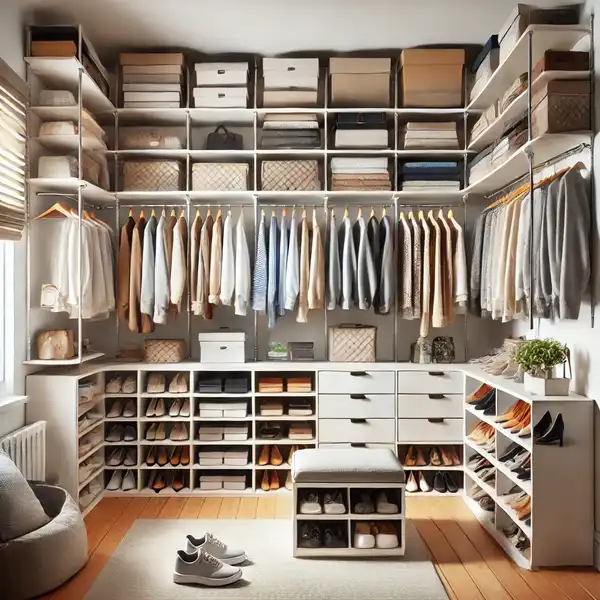
Before you start designing, it’s important to know what you need to store. Everyone’s needs are different, so your closet should be customized for your items. Make a list of:
- Clothes: How many items need to hang or be folded?
- Shoes: Count your shoes and make sure there’s space for all types (heels, boots, sneakers).
- Bags and Accessories: Plan spots for purses, hats, and scarves.
- Other Items: Will you store suitcases, seasonal clothes, or sports gear?
Knowing what you have helps you plan your closet, so you don’t end up with wasted space. If you have lots of hanging clothes, you’ll need more rods. For many shoes, more shelves are needed.
-
Measure Your Closet Space
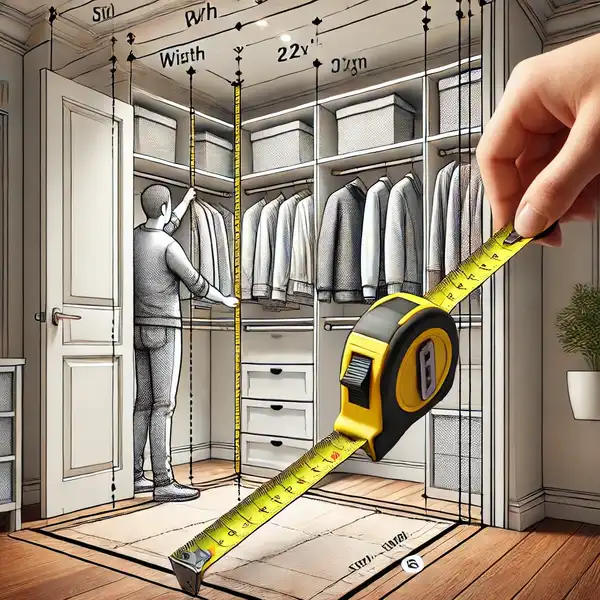
Next, measure your closet to see how much room you have. These measurements will help you plan where everything will go. Here’s how to do it:
- Height: Measure from the floor to the ceiling, checking different spots.
- Width and Depth: Measure each wall’s width and depth. Don’t forget to account for baseboards and doors.
- Doorways: Measure doorways to see how they affect space.
These measurements are essential for planning rods, shelves, and drawers to fit properly.
-
Choose Your Layout
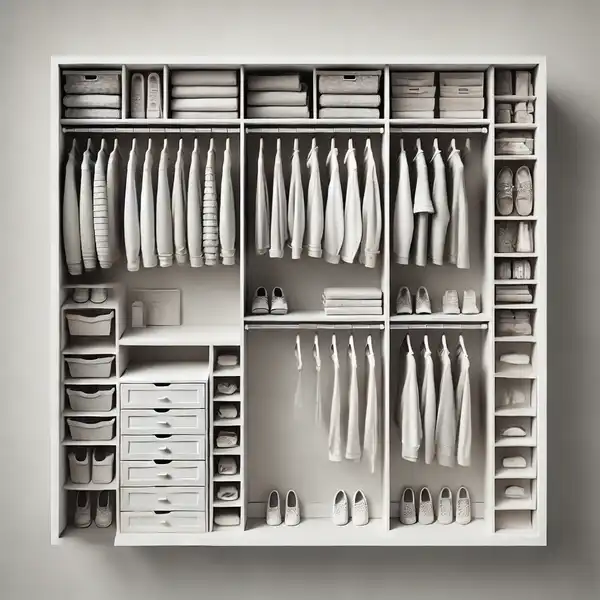
The layout of your closet depends on the space’s size and your personal needs. Walk-in closets come in different shapes, such as square, rectangular, or L-shaped. Once you know your space, you can choose a layout that maximizes storage.
Here are some popular layout ideas:
- Single-Sided Layout: This layout is best for narrow, small walk-in closets. It places all the storage along one wall, leaving the rest of the space open for easy movement.
- Double-Sided Layout: For medium to large closets, a double-sided layout uses two walls for storage, often with hanging rods on one side and shelves or drawers on the other.
- U-shaped layout: Perfect for large spaces, this layout uses three walls for storage, allowing maximum use of the space.
Remember, the goal is to maximize the available space while keeping everything easy to access.
-
Focus on Hanging Space
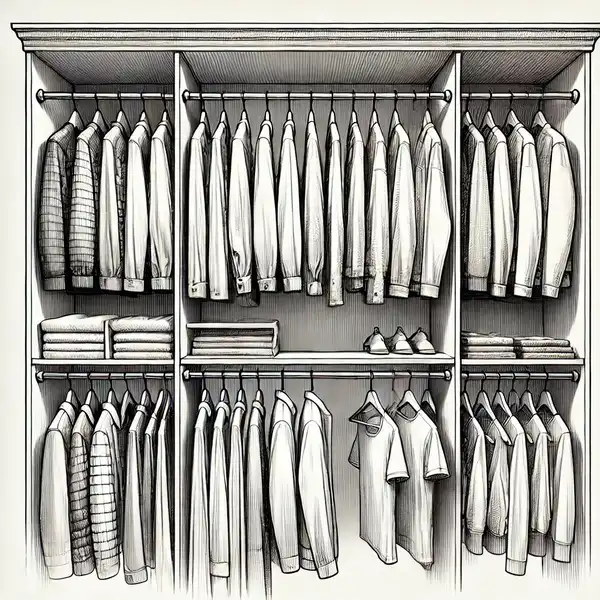
Hanging space is key in most closets because it keeps your clothes wrinkle-free and easy to find. When planning hanging space, consider the different types of clothes you have. Clothes fall into two main categories: long-hanging and short-hanging.
- Short-Hanging Clothes: Shirts, jackets, and skirts about 42 inches or shorter. You can save space by using double-hanging rods, one above the other. This creates two levels of hanging space for more clothes.
- Long-Hanging Clothes: These dresses, long coats, or pants need more vertical space. Ensure you plan for at least one closet section with enough height for long-hanging items.
-
Add Shelving for Folded Items
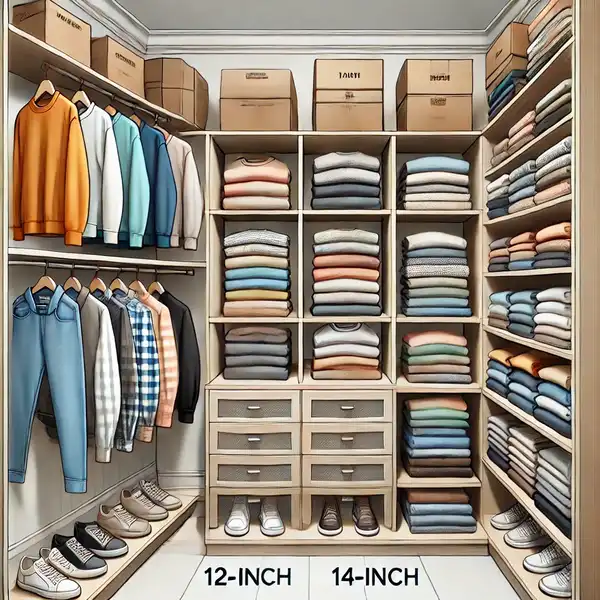
Not everything belongs on a hanger. Folded clothes like sweaters, jeans, or workout clothes are stored on shelves. When adding shelves, think about what you’ll store and how deep the shelves should be.
- 12-inch Shelves are good for smaller items like t-shirts or accessories but can be too narrow for larger items.
- 14-inch Shelves: This is the “Goldilocks” depth for most closets because it fits folded shirts, jeans, and shoes without cluttering things.
- 18-Inch Shelves: Perfect for storing bulkier items, like blankets, towels, or large handbags.
You can also mix and match shelf depths to accommodate different items.
-
Plan for Shoes
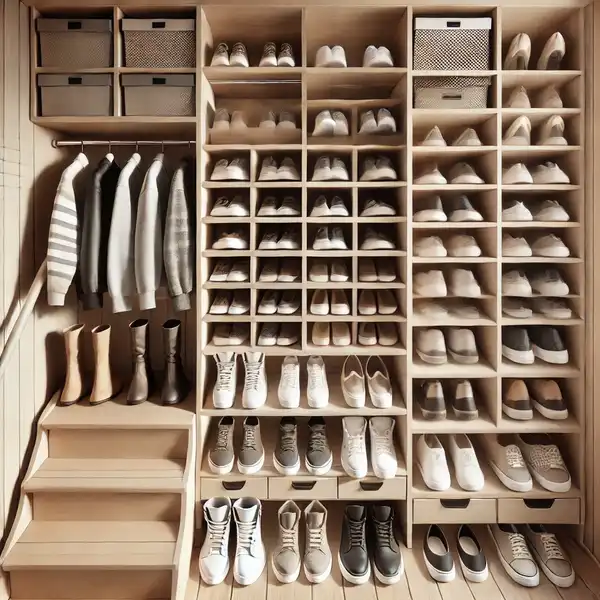
Shoes often take up a lot of space in a closet, but with the right planning, you can keep them organized and easy to find. There are a few ways to store shoes in a walk-in closet:
- Shoe Racks: Adjustable racks that stack shoes vertically, saving floor space.
- Cubbies: Individual cubbies for each pair of shoes can help keep things neat and organized.
- Shelves: Simple shelves work well for displaying and storing shoes. You can add angled shelves for better visibility.
If you have a lot of shoes, consider dedicating an entire wall to shoe storage.
-
Drawers and Cabinets
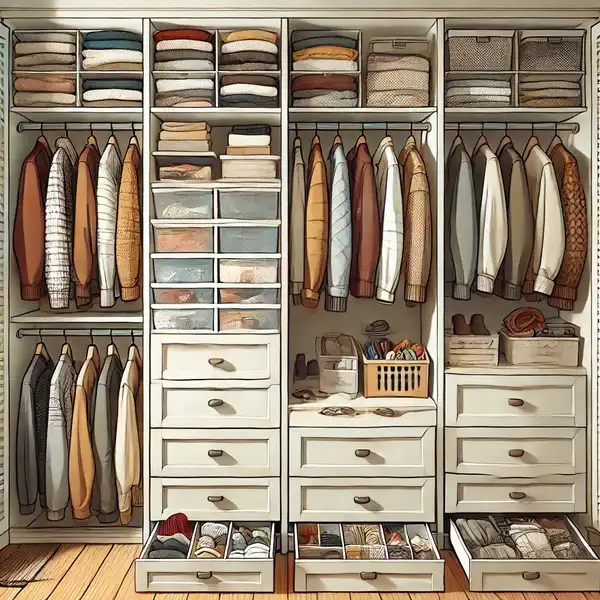
While hanging space and shelves handle most clothes, drawers, and cabinets are great for storing smaller items like underwear, socks, and accessories. Consider adding:
- Drawers: These are ideal for items that don’t need to be on display but need to stay organized, such as jewelry, belts, or scarves.
- Cabinets: If you have items you don’t want to see every day (like seasonal clothing), cabinets can help hide them away while keeping them accessible when needed.
Adding a few drawers and cabinets will make your closet feel more like a well-organized room rather than just a place to hang clothes.
-
Don’t Forget Special Storage
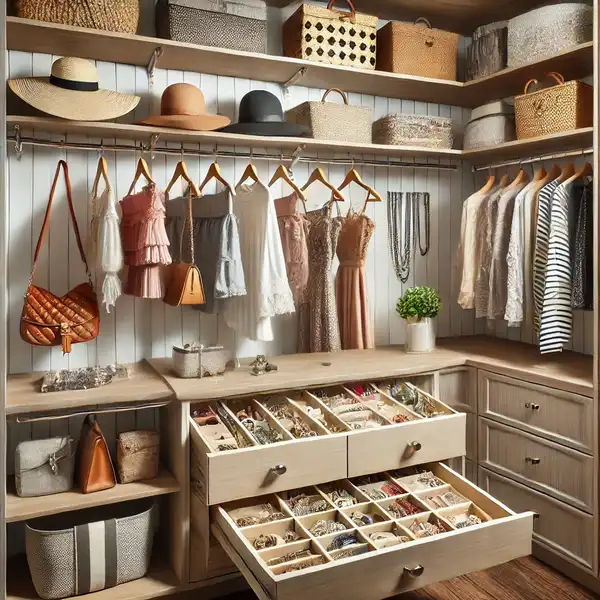
Every walk-in closet has its quirks, and planning for any unique storage needs is important. For example:
- Hats: Consider adding hooks or special shelves for hats.
- Handbags: Handbags can be hung on hooks, stored on shelves, or even placed in cubbies.
- Jewelry: If you have a lot of jewelry, you can include a jewelry drawer with special dividers to keep everything tangle-free.
- Seasonal Storage: Some people use their closets to store seasonal items like winter coats or Christmas decorations. If necessary, make sure you have space for these items.
The key is to customize your closet to your specific needs so that everything has its place.
-
Use Lighting Wisely
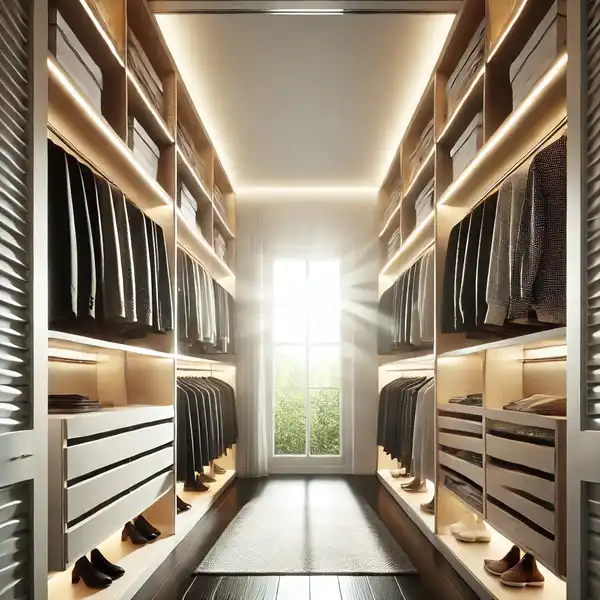
Proper lighting is often overlooked but is very important in a walk-in closet. It’s hard to find what you need without enough light, especially if you have deep shelves or drawers. Here are some lighting tips for your closet:
- Overhead Lighting: Install a bright ceiling light to illuminate the entire space.
- Task Lighting: Consider adding task lighting, such as LED strips under shelves, to highlight specific areas.
- Natural Light: If your closet has a window, use natural light. Just use curtains or blinds to protect clothing from sun damage.
With the right lighting, your closet will be more functional and look better overall.
-
Plan for the Future
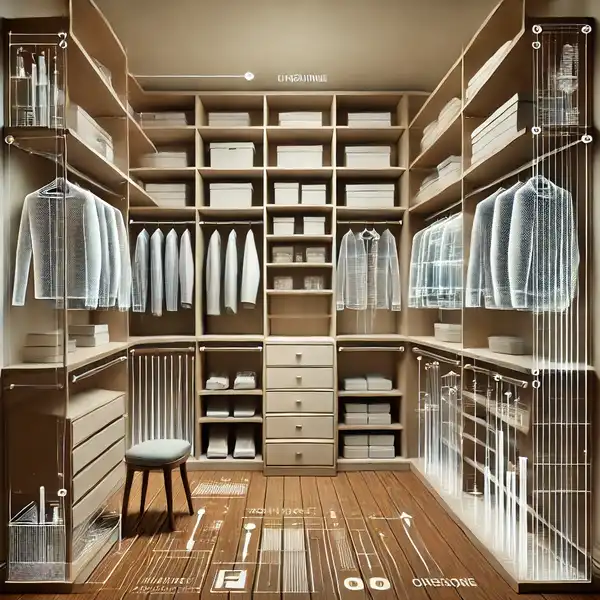
Finally, consider how your needs might change over time as you design your closet. For example:
- Flexible Shelving: Choose shelves that can be adjusted as your needs change. This allows you to add more space for shoes or foldable clothes in the future.
- Interchangeable Units: Some closet systems allow you to swap out rods, shelves, or drawers as your collection of clothes or accessories grows.
- Durability: Invest in sturdy materials that will last for years. A well-designed closet should last a long timea without needing repairs or updates.
A good closet design grows with you, ensuring that it continues to meet your needs even as they change.
Conclusion
Designing a walk-in closet doesn’t have to be overwhelming. By taking inventory of your items, measuring your space, and choosing the right layout, you can create a functional and personalized closet. Remember to maximize your space by focusing on hanging space, shelving, shoe storage, and drawers. With the right lighting and a little planning for the future, your walk-in closet can become a well-organized and stress-free part of your daily life.
By following these steps, you’ll create a walk-in closet perfect for your needs—whether you’re storing everyday clothes, special accessories, or seasonal items. Happy designing!